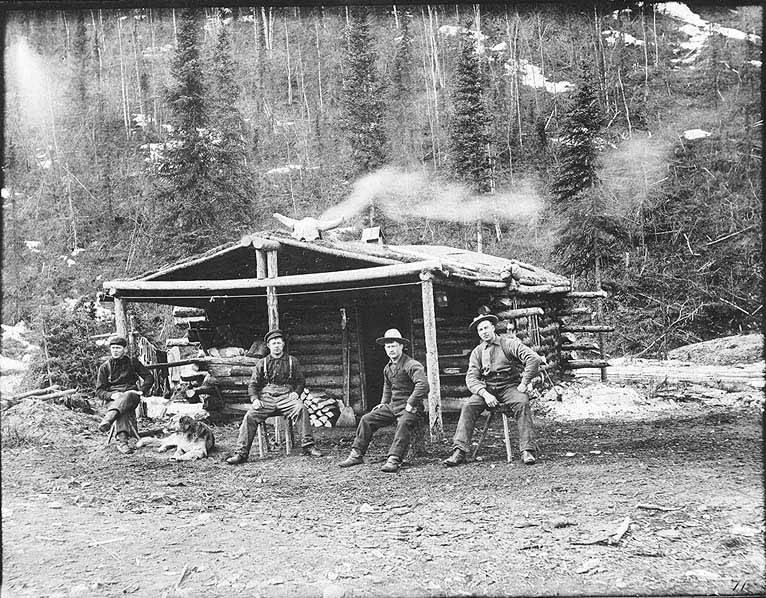
This installment about constructing a wilderness camp goes into furnishing your cabin with a camp bed as described in “Woodcraft” by E.H. Kreps, 1919. In case you missed the initial series, follow the links below. The next installment will cover how to make a table for your cabin.
1st Installment: Selecting a location and initial preparation of a wilderness camp
2nd Installment: Construction of walls, floor, door and windows for a wilderness cabin
3rd Installment: Construction of gables and roof for a wilderness cabin
4th Installment: Finishing the wilderness cabin door, window and filling cracks
Making a camp bed
From the book “Woodcraft” by E.H. Kreps, 1919
Our stove completed and in working order we next turn our attention to the bed, since it ranks second in importance. We set an upright post four inches thick and three feet long against the sidewall about five feet from the end of the room and nail it firmly in position. Then at a height of about two feet from the floor we fasten to the wall another four-inch piece, this extending in a horizontal position from the post to the end wall. Then we set up a corner post at the foot of the bed, placing it five feet from the end wall and nailing the top securely to the roof binding pole. In line with this against the end wall we set up another three-foot post and spike it solidly to the logs of the wall. Then we cut notches in these two latter posts two feet above the floor and into this we fit and nail fast a four-inch cross strip. We now have the foundation for our bed and we make the bottom of straight, smooth poles, nailed fast to the horizontal ends. These poles must all be of about the same thickness to make a satisfactory bed, otherwise some of them will bend or spring while the stiff ones will not. If it were summer now we would line this bunk with bark to keep the balsam needles from falling through, but since we cannot get bark at this time of year we cannot do this. We make the side and end of the bed by nailing poles against the posts. Then we fill the bed with balsam boughs. These are the ends of the branches and the heaviest stems are less than a fourth-inch thick. We commence at the head and stand the boughs on end at an angle, stems down. When entirely filled we have a soft and fairly comfortable bed, of course not equal to the spring bed we have at home, but then we are not expecting home comforts in the big woods, and we are always tired enough to rest well in a bough bed. For pillows we use grain bags in which we place our extra clothing.
This bed is at its best when freshly filled. Each night’s use reduces its softness, and the comfort decreases at a like rate. The only way to keep a bough bed in good condition is to replace the bough filling occasionally with fresh evergreens. When we kill some big game animal, a deer or caribou, we will dry the skin and place it on our bed, hair side up, for this will make the bed warmer and softer.
The next installment of this series will cover making a table for your cabin.